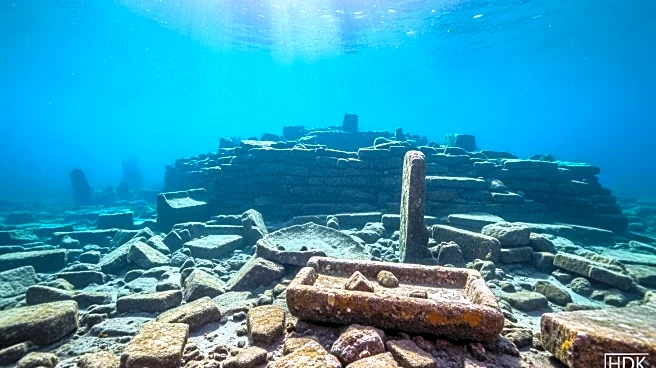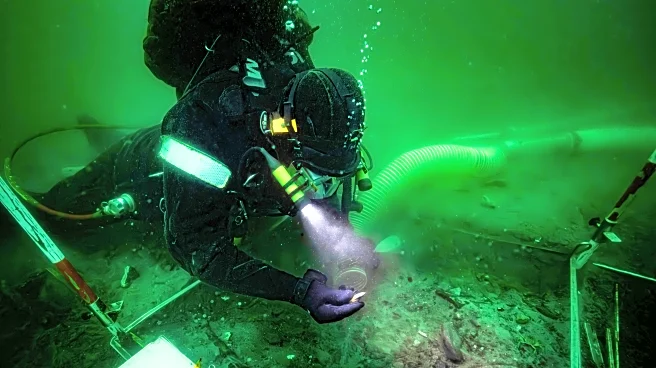What is the story about?
What's Happening?
Archaeologists have uncovered a Stone Age settlement submerged by rising sea levels 8,500 years ago in the Bay of Aarhus, Denmark. The discovery is part of a $15.5 million international project funded by the European Union to map submerged landscapes in the Baltic and North Seas. Led by underwater archaeologist Peter Moe Astrup, the team has excavated an area of about 430 square feet, finding animal bones, stone tools, and a piece of worked wood. The project aims to understand how ancient societies adapted to changing coastlines after the last ice age, when sea levels rose significantly.
Why It's Important?
This discovery provides valuable insights into how ancient human populations adapted to environmental changes, particularly rising sea levels. As modern societies face similar challenges due to climate change, understanding past adaptations can inform current strategies. The research also contributes to the broader understanding of Northern European prehistoric landscapes, offering a glimpse into the lives of Stone Age communities. The findings may influence future archaeological methods and conservation efforts as offshore wind farms and sea infrastructure expand.
What's Next?
Further excavations are planned in the Bay of Aarhus and off the coast of Germany, with subsequent work in the North Sea. Researchers hope to uncover more artifacts, such as harpoons and fishhooks, to build a comprehensive picture of the settlement's lifestyle. The study of submerged tree stumps using dendrochronology will continue to provide precise data on historical sea level changes. These efforts aim to deepen the understanding of ancient coastal societies and their responses to environmental shifts.
Beyond the Headlines
The project highlights the importance of preserving underwater archaeological sites, which serve as time capsules of human history. The findings may also prompt discussions on the ethical implications of expanding sea infrastructure in historically significant areas. Additionally, the research underscores the need for interdisciplinary collaboration in addressing complex environmental challenges.
AI Generated Content
Do you find this article useful?












